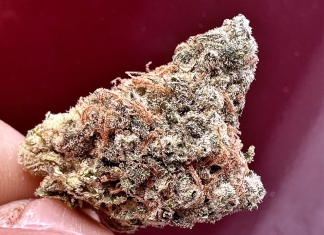In San Diego’s effort to be tough on cannabis crime, some city leaders are actually paving a path for the unlicensed market to thrive.
San Diego has a sizeable number of locally-owned commercial cannabis businesses that, despite their best efforts to obtain a license to operate legally, are unable to do so. Why? The city’s current policy framework is fatally flawed.
Right now, San Diego imposes unrealistic district-by-district caps on the number of legal storefronts that are allowed to sell and deliver. These restrictive zoning parameters make it impossible for any of the hundreds of commercial cannabis operators to secure a license.
Just 36 licenses are currently available, but only 17 have been granted so far; and only 13 of these have secured a California license to sell to both medical patients and adult-use consumers.
And, in a move that runs contrary to Los Angeles and other California cities, San Diego prohibits stand-alone delivery services from operating at all. They also restrict delivery services to the very limited number of already existing retail storefronts.
Do the math. San Diego has a population of approximately 1.4 million residents and nearly 34 million visiting tourists. It stretches the bounds of rationality to think that 17 shops (and the same number of delivery services) can meet consumer demand without encouraging an illegal market to flourish.
San Diegans clearly want legal access to adult use cannabis. They made their voice heard in 2016 by voting overwhelmingly in support of Proposition 64 – in some districts with as high as 76 percent of the “yes” vote.
In reviewing retail density versus illegal market rates in legalized cities across the U.S., our research indicates that the optimal ratio is one retail access point (storefront or delivery service) per 7,500 residents. Cities that fail to meet this density level see a sizeable increase in their illegal market to the point where law enforcement efforts alone are ineffective, and at less than one per 10,000 residents, these problems become persistent.
San Diego’s current density is one cannabis retailer per 82,000 residents. That simply doesn’t make sense. At that number, San Diego will have a persistent illegal market hovering around 70 to 75 percent. Los Angeles, by comparison, is projected to have one retailer per 4,000 residents. Denver, Colorado, has one retailer per 2,125 residents and Portland, Oregon, has one retailer per 4,475 residents.
The severe restrictions also cripple the abilities and budgets of law enforcement.
Our research shows that there is a clear relation between illegal market share and the effectiveness of law enforcement in preventing illegal operators from reopening. For example, with a 50 percent illegal market share, roughly 50 percent of illegal operators that are the subject of police raids will reopen. During our advisory work with state and local governments, we have never seen a successful law enforcement strategy when the illegal market rate exceeds 50 percent.
Toronto, Canada, offers a compelling example. In 2016, their police conducted a series of simultaneous raids against forty cannabis retailers. Ninety people were arrested and nearly 260 charges were filed. But within days, charges against 72 of these individuals were dropped and many of the shops reopened their operations within a month — several opening more than one location to meet consumer demand.
Not only is this “whack-a-mole” strategy unsuccessful, it is expensive. According to several elected officials and law enforcement experts, conducting a single raid on a commercial cannabis facility costs between $50,000 to $100,000 of taxpayer money and typically consumes the resources of higher paid police specialty units (not including judiciary or incarceration costs).
Based on San Diego’s cannabis retail density and its illegal market share, a conservative estimate would place the cost of police enforcement with the current model in excess of $10 million annually. It is foolish to incur these costs at the expense of taxpayers when additional licensing of cannabis dispensaries and delivery services would easily alleviate the problem.
The city’s regulations also seem to ignore the fact that current California regulations prohibit any municipality from restricting licensed cannabis retailers in neighboring cities from delivering into San Diego. In the absence of San Diego increasing license numbers, it seems likely that surrounding cities will rush to license cannabis retailers who will then deliver into San Diego while providing no job or tax benefits to the city.
A properly licensed and fairly regulated cannabis industry in San Diego will provide jobs and revenue to the city, easing families from economic struggles and helping the city move forward. San Diego’s current model doesn’t do that.














